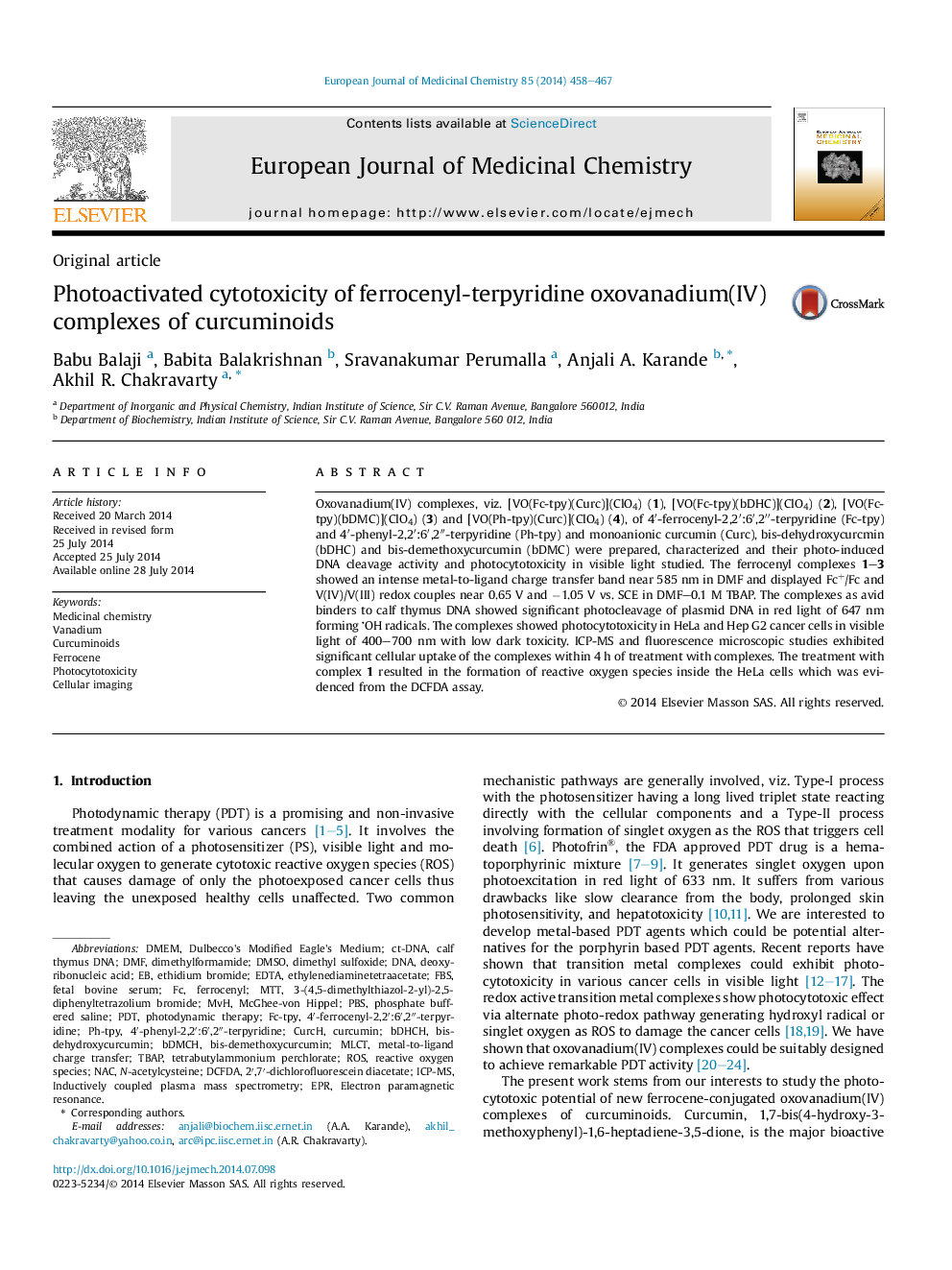| Article ID | Journal | Published Year | Pages | File Type |
|---|---|---|---|---|
| 1392341 | European Journal of Medicinal Chemistry | 2014 | 10 Pages |
•Oxovanadium(IV) complexes are photocytotoxic in HeLa cells in visible light.•DCFDA assay shows photo-generation of ROS by the complex in HeLa cells.•Apoptotic cell death on light exposure is evidenced from Hoechst staining.•The oxovanadium(IV) complexes show DNA binding and photocleavage activity.
Oxovanadium(IV) complexes, viz. [VO(Fc-tpy)(Curc)](ClO4) (1), [VO(Fc-tpy)(bDHC)](ClO4) (2), [VO(Fc-tpy)(bDMC)](ClO4) (3) and [VO(Ph-tpy)(Curc)](ClO4) (4), of 4′-ferrocenyl-2,2′:6′,2″-terpyridine (Fc-tpy) and 4′-phenyl-2,2′:6′,2″-terpyridine (Ph-tpy) and monoanionic curcumin (Curc), bis-dehydroxycurcmin (bDHC) and bis-demethoxycurcumin (bDMC) were prepared, characterized and their photo-induced DNA cleavage activity and photocytotoxicity in visible light studied. The ferrocenyl complexes 1–3 showed an intense metal-to-ligand charge transfer band near 585 nm in DMF and displayed Fc+/Fc and V(IV)/V(III) redox couples near 0.65 V and −1.05 V vs. SCE in DMF–0.1 M TBAP. The complexes as avid binders to calf thymus DNA showed significant photocleavage of plasmid DNA in red light of 647 nm forming OH radicals. The complexes showed photocytotoxicity in HeLa and Hep G2 cancer cells in visible light of 400–700 nm with low dark toxicity. ICP-MS and fluorescence microscopic studies exhibited significant cellular uptake of the complexes within 4 h of treatment with complexes. The treatment with complex 1 resulted in the formation of reactive oxygen species inside the HeLa cells which was evidenced from the DCFDA assay.
Graphical abstractFerrocene-conjugated oxovanadium(IV) complexes of curcuminoids show remarkable PDT effect in visible light of 400–700 nm in HeLa cells compared to normal 3T3 cells with low dark toxicity via apoptotic pathway forming reactive oxygen species.Figure optionsDownload full-size imageDownload as PowerPoint slide
